In the context of the rapidly growing culinary and food service industry, investing in industrial kitchen equipment for a canteen […]
Read more

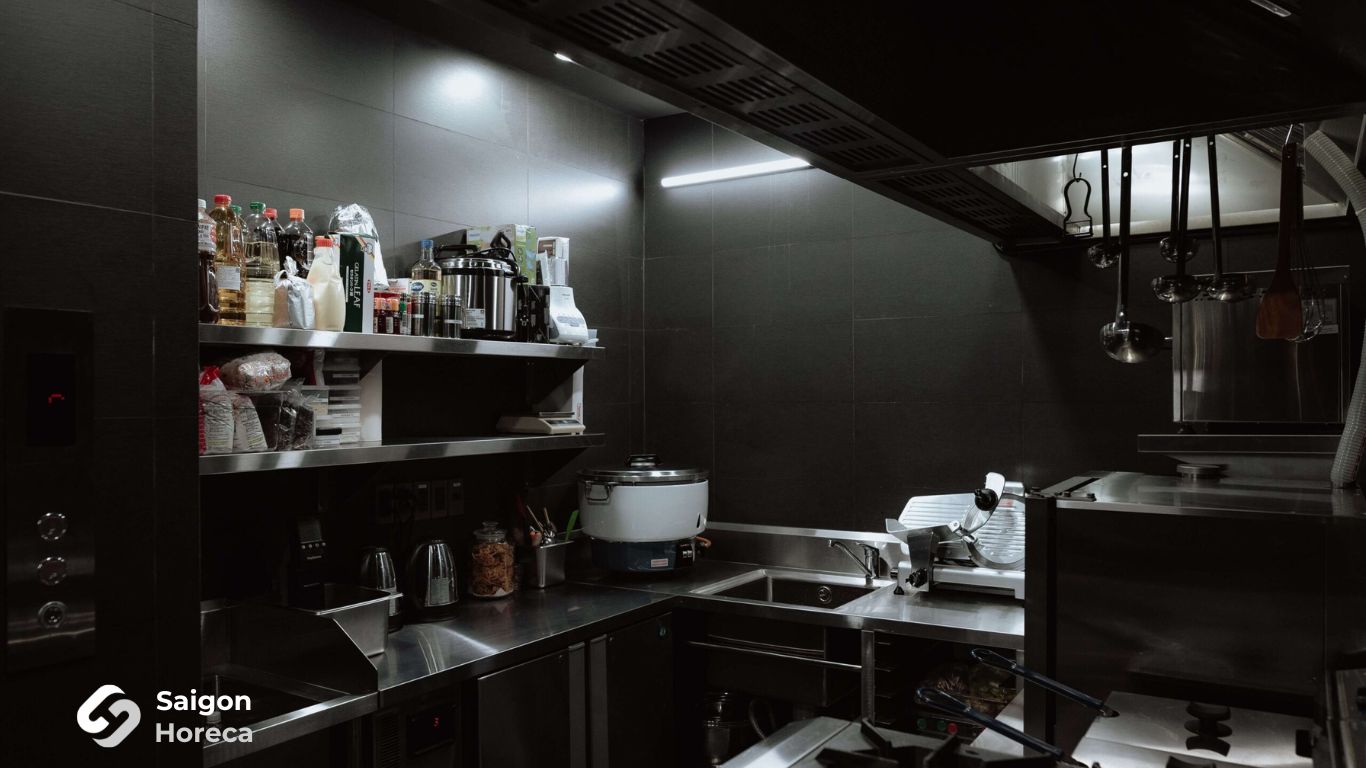

In a cafeteria environment, where the workload is high and speed of service is essential, kitchen equipment plays a vital role in ensuring smooth operations. However, with continuous usage, regular maintenance becomes extremely important to maintain optimal performance and extend the equipment’s lifespan.
Not only does proper maintenance help save on repair costs, but it also ensures food safety and compliance with labor safety regulations. Therefore, to keep the cafeteria kitchen operating effectively and sustainably, maintenance of equipment cannot be overlooked.
Understanding and following the correct maintenance procedures is not just a sensible investment but also a key factor in the long-term success of any cafeteria.
In a modern cafeteria, choosing and using kitchen equipment is not just about meeting cooking needs; it also plays a crucial role in the overall success of the entire operation.
However, it’s not just about efficiency; this equipment must also strictly adhere to food safety standards, an essential factor in any food preparation environment.
The performance of a cafeteria largely depends on selecting equipment that matches the scale and usage needs. Equipment such as commercial stoves, multifunction ovens, and automatic dishwashers not only speeds up the cooking process but also ensures that each dish is prepared with accuracy and consistency.
Speed, durability, and stability are key factors when assessing equipment performance. A commercial stove that can maintain stable heat and adjust flexibly allows chefs to cook quickly and efficiently, thereby optimizing food production during peak hours.
In large-scale food preparation environments like cafeterias, adhering to food safety regulations is extremely important. Kitchen equipment plays a central role in maintaining cleanliness and preventing cross-contamination.
For example, commercial refrigerators must maintain stable temperatures to prevent bacterial growth, while industrial dishwashers must ensure high-temperature washing to kill germs.
Materials like stainless steel, commonly used in kitchen equipment, are easy to clean and limit bacterial growth on surfaces. Equipping the right type of equipment not only ensures hygiene but also supports thorough monitoring and inspection of food safety.
To achieve both optimal performance and ensure safety, cafeterias today often prioritize equipment that combines modern technology with user-friendly features.
Advanced smoke and ventilation systems are a prime example, effectively removing smoke, steam, and grease while ensuring that the workspace remains cool and safe for staff health.
Additionally, modern equipment often comes with automation features that reduce human error and enhance precision. This not only helps the cafeteria operate smoothly but also ensures that hygiene standards are maintained at the highest levels.
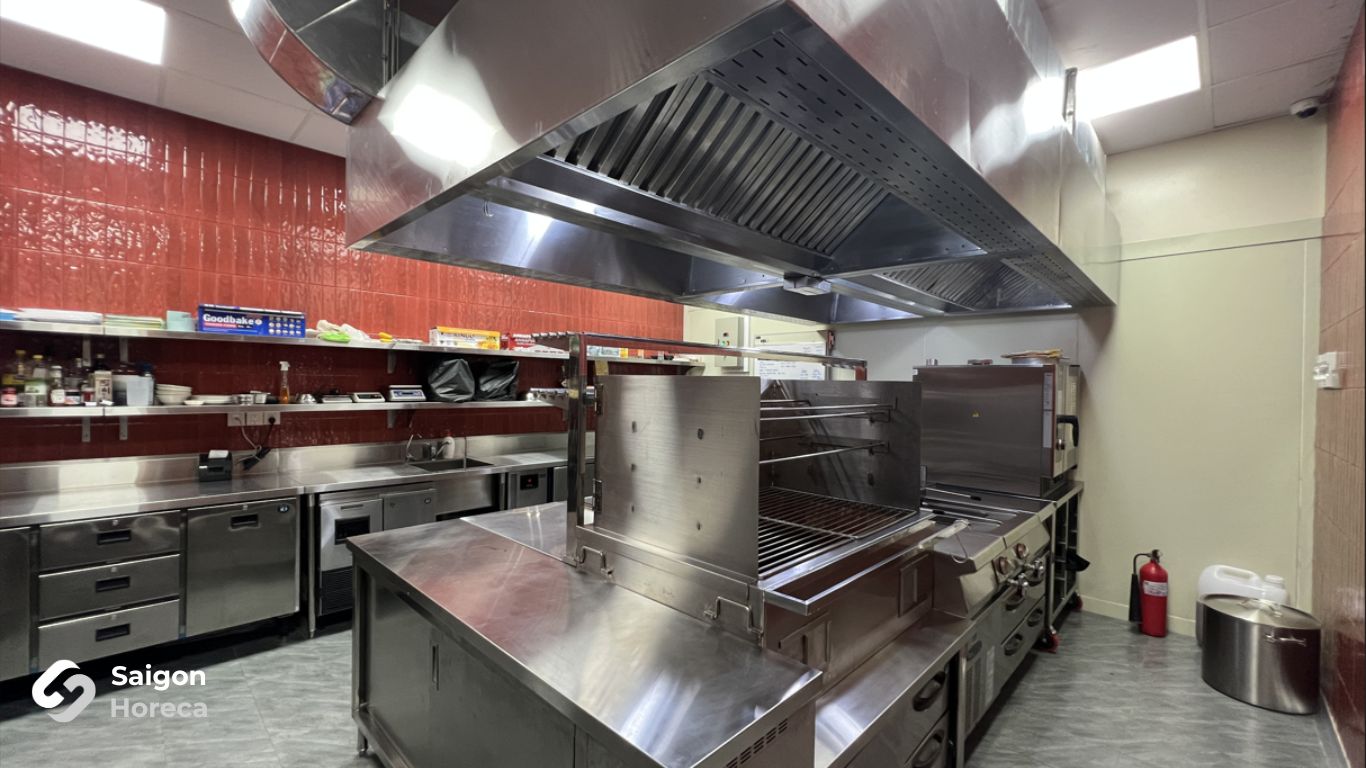

Here is a list of the top 5 essential equipment for cafeteria kitchens, along with the benefits and key features of each item.
A commercial refrigerator is one of the most important pieces of equipment in any cafeteria kitchen. With a large capacity, it not only preserves fresh food but also helps maintain food quality over time. The refrigerator has separate compartments for freezing and chilling, catering to diverse storage needs like vegetables, meat, and beverages.
The commercial gas stove is the heart of the cafeteria kitchen, where all the cooking takes place. With high power, it allows for the preparation of multiple dishes in a short time, quickly meeting customer demands during peak hours.
In a cafeteria environment, where a large number of dishes need to be cleaned continuously, a commercial dishwasher is indispensable. It saves time and ensures food safety by thoroughly cleaning dishes at high temperatures.
A commercial oven plays an important role in preparing delicious dishes such as bread, pizza, and other baked items. With the ability to maintain precise temperatures and high output, it ensures that dishes are evenly cooked and retain the best flavor.
A commercial smoke extractor helps keep the kitchen clean, fresh, and odor-free. Especially in a cafeteria where the kitchen operates continuously and generates a lot of smoke and grease, a smoke extractor is essential for protecting staff health and ensuring workplace safety.
Equipping the kitchen with the right type and quantity of commercial kitchen equipment not only optimizes kitchen operations but also ensures service quality and food safety.
With a high workload and demands for food quality, the equipment used in cafeterias needs to be durable, energy-efficient, and low-maintenance. Here are some essential tips to help you choose suitable equipment that saves costs while enhancing operational efficiency.
One of the first factors to consider when selecting equipment for a cafeteria kitchen is the durability and quality of the product. Durable equipment minimizes breakdowns and frequent maintenance, thus reducing repair and replacement costs over the long term.
To ensure durability, opt for equipment from reputable brands that offer long warranties and are made from rust-resistant materials like stainless steel.
Tip:
Energy consumption is one of the largest costs in operating a cafeteria, especially for large appliances like commercial refrigerators, gas stoves, and dishwashers. To save on energy costs, choose equipment with energy-saving features or gas-saving capabilities that adjust energy consumption based on actual needs.
Additionally, investing in devices with Energy Star certification is an effective way to reduce energy usage without compromising performance.
Tip:
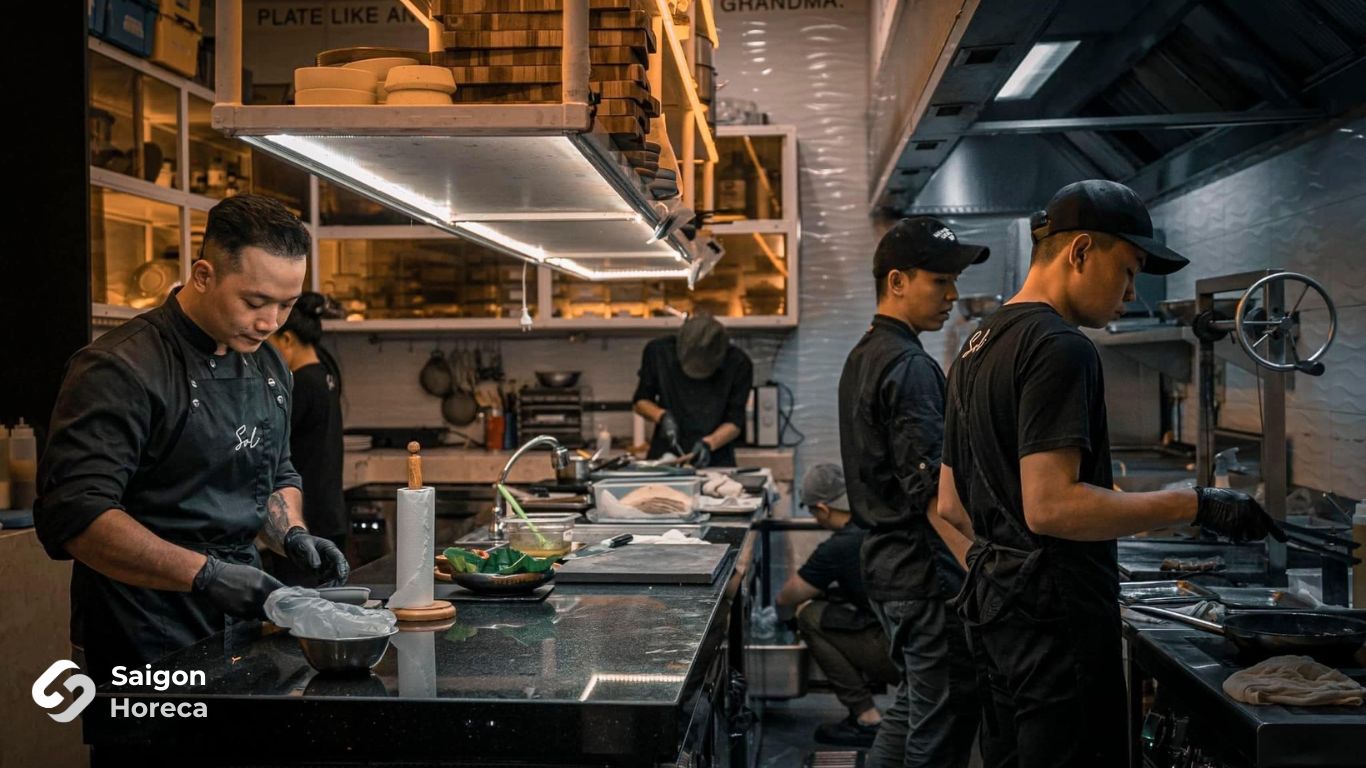

Good equipment should not only operate efficiently but also be easy to maintain.
Choosing equipment with a simple, easy-to-disassemble design can save you maintenance costs and reduce downtime when issues arise. This is particularly important in a cafeteria setting, where any malfunction can slow down service and result in significant losses.
Tip:
While a cheaper piece of equipment may save initial costs, if it is not durable or consumes a lot of energy, operating costs can increase significantly over time.
Instead of focusing solely on price, weigh the initial investment value against long-term benefits. Sometimes, investing in high-quality equipment with a higher upfront cost can lead to overall cost savings during its use.
Tip:
Multi-functional equipment not only saves space but also optimizes operational processes, reducing procurement and maintenance costs. Devices like combination ovens or dual-purpose stoves can cook and steam food, shortening preparation times and saving fuel.
Tip:
By focusing on durability, energy efficiency, ease of maintenance, and flexibility, you can ensure that your cafeteria kitchen operates smoothly, reliably, and cost-effectively in the long term.
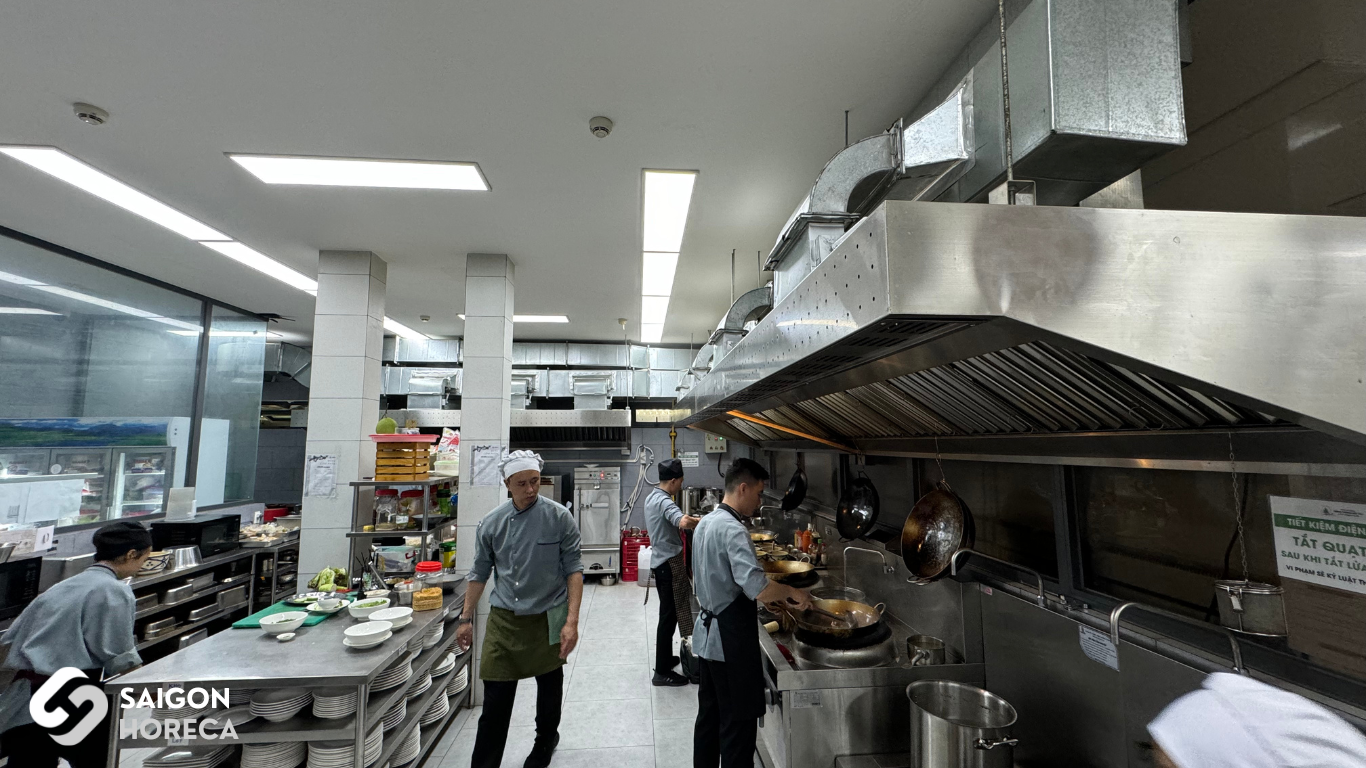

In an industrial kitchen environment like a cafeteria, equipment is used frequently and must meet strict performance standards. Regular maintenance not only ensures that equipment operates reliably but also upholds safety and food hygiene standards. Maintaining cafeteria kitchen equipment helps extend its lifespan, minimize unexpected breakdowns, and optimize productivity.
Safety in cafeteria kitchens goes beyond ensuring food is prepared correctly; it also includes the safety of staff and customers. Malfunctioning or poorly maintained equipment can lead to accidents or serious incidents.
Regular maintenance helps identify potential hazards early, such as gas leaks, electrical malfunctions, or mechanical issues. This helps businesses comply with occupational safety and food hygiene regulations, avoiding unnecessary legal risks.
Every piece of equipment has a certain lifespan, but with regular maintenance, you can extend the lifespan of the equipment and maximize the investment value. Industrial kitchen appliances like gas stoves, commercial refrigerators, and dishwashers often require significant initial investment costs.
Thus, keeping them in optimal condition not only reduces replacement costs but also ensures that equipment operates reliably over a longer period.
Equipment failures during operation can disrupt food preparation processes and lead to significant financial losses and damage to reputation. Regular maintenance of industrial kitchens helps detect issues early, preventing unexpected breakdowns that can disrupt cafeteria operations. This is especially critical during peak hours, when high customer volumes require smooth processes to meet demand.
Well-maintained cafeteria kitchen equipment not only helps save repair costs but also reduces energy consumption. Equipment that is not properly maintained may consume more energy due to inefficiencies in its components. Through regular maintenance, equipment can maintain better energy efficiency, thereby reducing electricity, gas, and water costs.
Customers always appreciate cafeterias that operate professionally, safely, and efficiently. When equipment operates reliably thanks to regular maintenance, service quality improves. This not only helps maintain the cafeteria’s reputation with customers but also builds long-term trust, making management easier when it comes to operations and service.
Regular maintenance of cafeteria kitchen equipment is an essential factor for ensuring safety, efficiency, and cost savings. With the outstanding benefits of durability, safety, and performance optimization, regular maintenance will help the cafeteria operate smoothly and meet customer needs effectively. Consider maintenance as an important investment that brings long-term benefits to both the business and its customers.
In the food service and industrial kitchen industry, an optimally designed cafeteria kitchen not only enhances work efficiency but also ensures food safety and reduces operating costs. Saigon Horeca takes pride in being a reputable partner, specializing in providing top-notch cafeteria kitchen design services in Vietnam, backed by a team of experienced experts and flexible solutions tailored to each client’s needs.
With many years of experience in the industry, Saigon Horeca has collaborated with numerous businesses, both large and small, in the restaurant, hotel, and industrial cafeteria sectors. We understand the unique requirements of each business model, from scale to service type, allowing us to deliver designs that optimize space and operational processes.
Recognizing that every cafeteria has specific needs, Saigon Horeca offers customized designs based on the area, serving capacity, and service type of each business. We create intelligent kitchen spaces that streamline workflows, helping to enhance productivity and reduce preparation time.













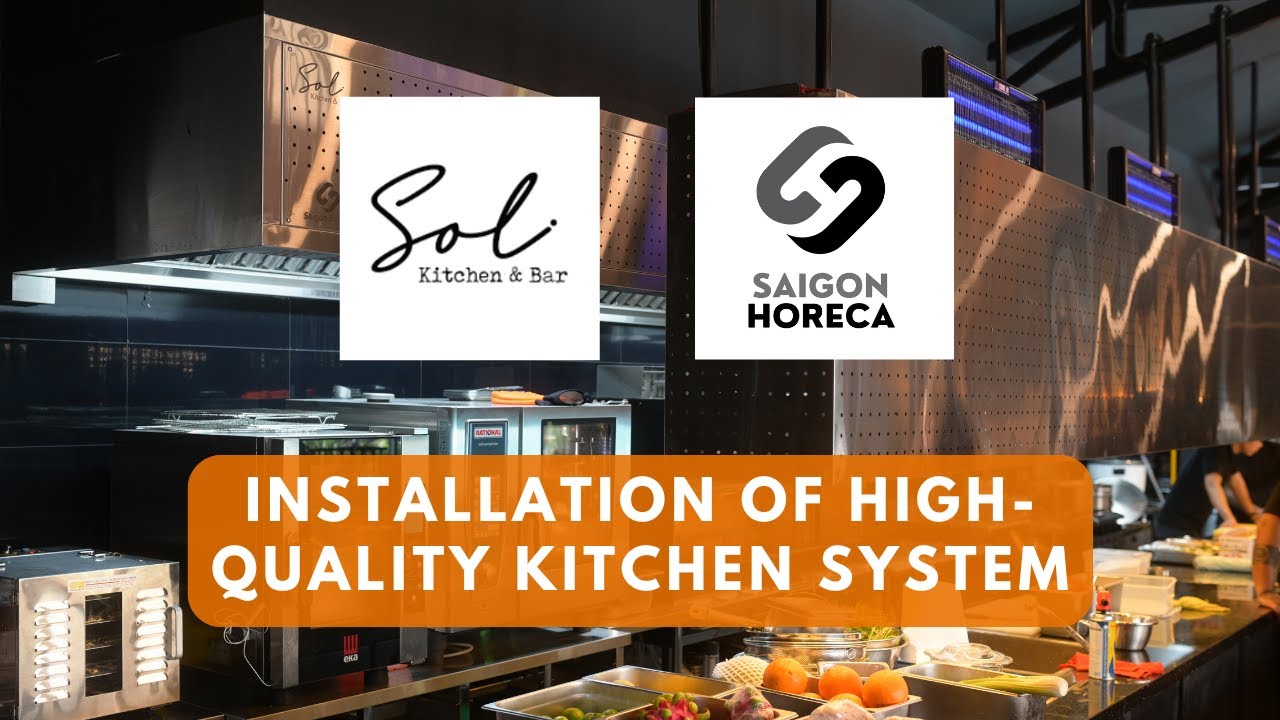










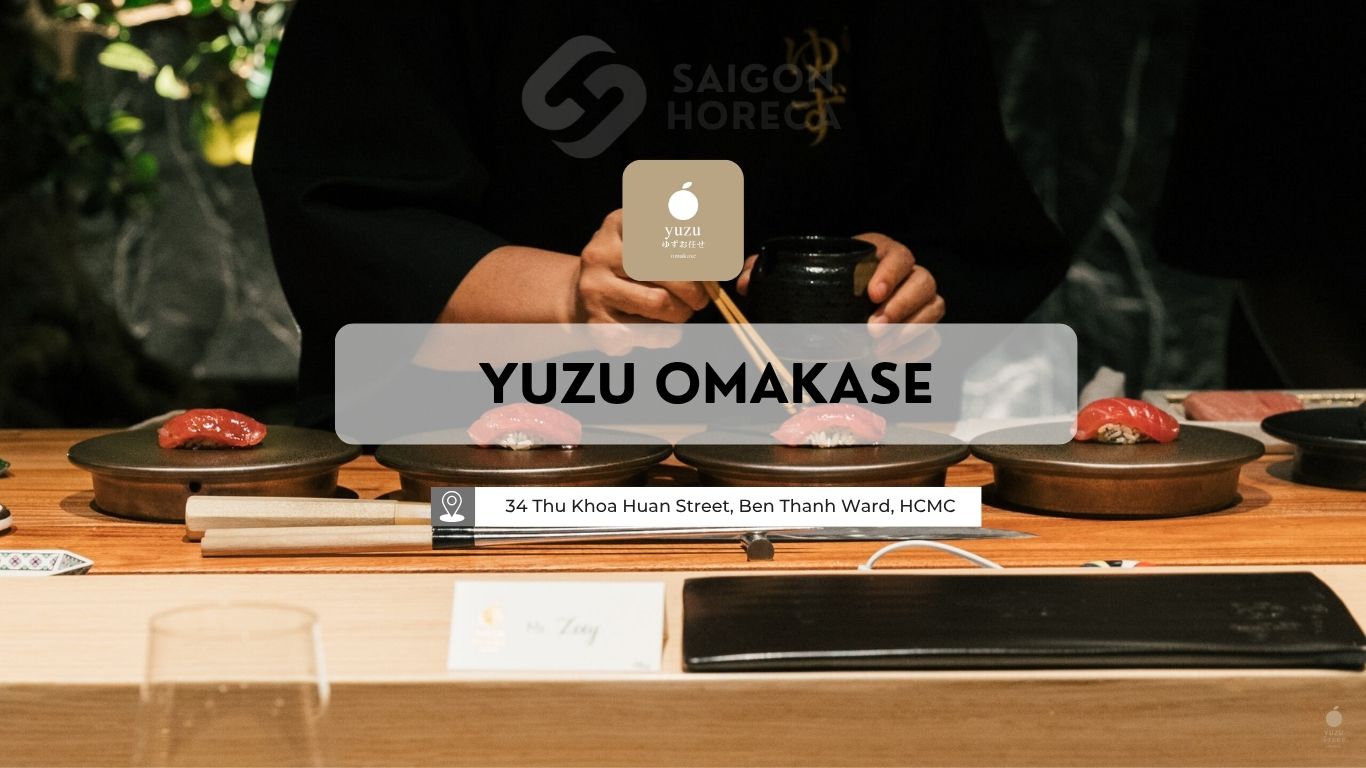



Monday - Friday
from 8h00 to 18h00
40 Street No. 6, Melosa Garden, Phu Huu District, HCMC
Contact anytime
In the context of the rapidly growing culinary and food service industry, investing in industrial kitchen equipment for a canteen […]
Read moreLooking to elevate your grilled dishes with a Salamander Grill? With its ability to grill quickly and evenly while giving […]
Read more